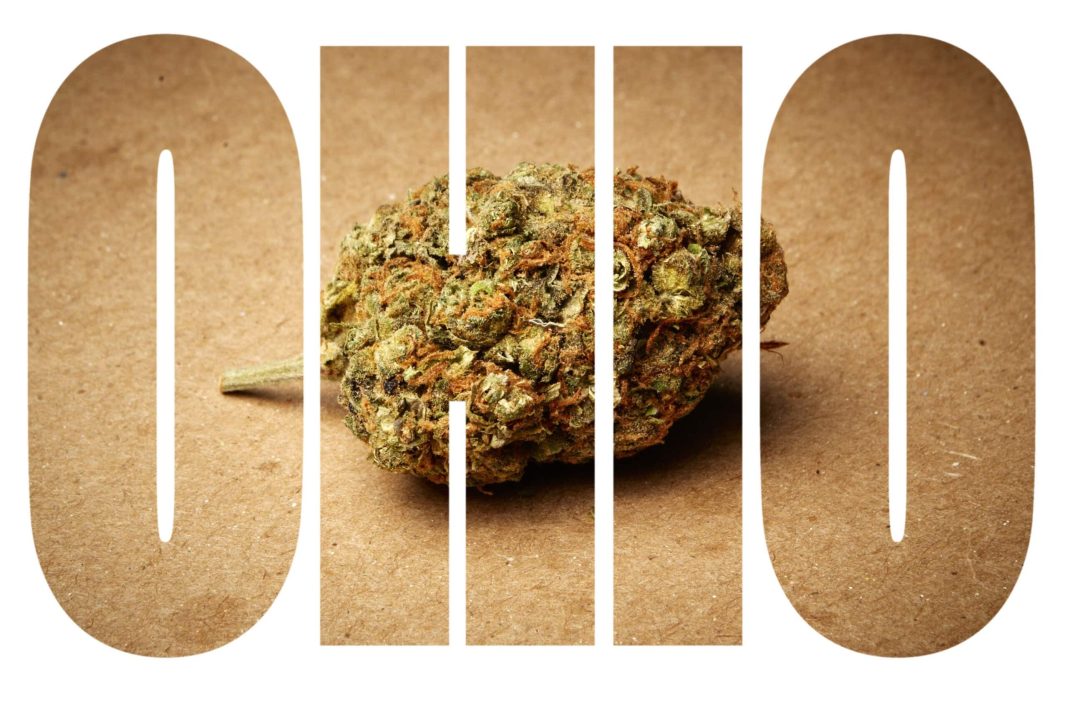Yet another state is gearing up for the next elections. An Ohio activist group just turned in enough signatures for a recreational ballot measure in the 2023 elections; after failing to get its chance last year. Is this a done deal? And what should we expect?
Ohio collects signatures for recreational ballot measure
On August 3rd, Ohio got it done. Marijuana Moment reported that Ohio activist group CTRMLA (The Coalition to Regulate Marijuana Like Alcohol), submitted over 220,000 signatures in total, in a bid to get a recreational ballot measure before voters this November. The group turned in most of the signatures last month, but just dropped off 6,545 more to add to the pile; since state officials said the group was 679 signatures short.
The group had a ten-day window to complete collection, which it did, and then some. Now there are about 6,000 extra. Is it a done deal? No, its not. Just like every other signature collection event, the signatures must be verified by county and state officials.
This newest batch of signatures is the 3rd that CTRMLA handed in; the first batch was submitted last year. That submission led to a four-month congressional review period on the matter. Though lawmakers could have intervened to create a formal policy when this happened, they did not; and CTRMLA went on collecting signatures for a ballot.
Said CTRMLA spokesperson Tom Haren, “This submission validates what we’ve said all along: regulating marijuana is popular in Ohio. We’re looking forward to giving Ohio voters a chance to make their voices heard at the ballot this fall.”
Ohio should have had recreational ballot measure last year
Those first signatures were collected in an effort to get the ballot measure into the 2022 elections, however, that didn’t happen. Though the signatures were valid, and the review session triggered; government officials challenged the timing of the submission. The CTRMLA tried to have the ballot measure legally forced into the election via lawsuit, but was not able to make this happen in time.
CTRMLA’s lawsuit with the state was settled, and the settlement detailed that the group didn’t have to recollect the first round of signatures, and that the measure would get immediate retransmission at the beginning of 2023’s legislative season. As previously mentioned, the government could have acted in that beginning time to create its own legislation; but chose not to. Not only did it not want to touch the subject of cannabis legalization at the time, it didn’t want it going before voters either.
This entire happening is interesting because it shows what looks like a duel between the activist organization and the state; in letting voters decide something, which the government is clearly against. Keep in mind, this is not to directly set a law, but to simply give voters the ability to vote on one. The state went pretty far to keep this from happening, but ended up only delaying the vote by a year (assuming it happens). Perhaps we can interpret the settlement as the state conceding that it has no legal ability to continue blocking the effort.
It’s not the first time we’ve seen this kind of behavior, in fact we see it all the time. Governments are so against cannabis legalization, that they’ll go to extremes to prevent a fair vote. One of the best examples is Kristi Noem, of South Dakota; who conspired with law enforcement after the state passed a legalization ballot measure in 2020, to have it taken away. I expect if what happened, had happened in a more populated state; this massive overstep would have gotten better coverage.
Provisions of Ohio recreational ballot measure
Should the Ohio recreational ballot measure make it to the ballot this coming November, here are some of its provisions.
Possession and cultivation:
- Adults 21+ can possess up to 2.5 ounces (~70 grams) flower, or up to 15 grams concentrate.
- Adults 21+ can grow up to six plants, with a maximum household limit of 12. This is only for personal use.

Licensing
- Individual municipalities can opt out of letting recreational cannabis enterprises from opening stores in particular areas. However, this does not account for existing medical cannabis dispensaries, which cannot be barred from adding on adult-use sections.
- Adult use licenses can start to be given out to medical dispensaries first, within nine months of the law’s enactment.
- Licensing and regulation fall under the jurisdiction of the Division of Cannabis Control, which would be under the Department of Commerce.
- In the beginning, the law requires that 40 recreational cultivator licenses are given out, and 50 licenses for adult-use retail stores. Preference is given to those who meet social equity guidelines.
- Additional licenses are to be granted two years following the approval of the first operator.
Other provisions
- No specific expungement provision exists for those with prior convictions no longer relevant under the new law. It does, however, include a requirement to “study and fund” something in the vein of criminal justice reform, which includes expungements.
- Regulators must provide addiction services for cannabis, by partnering with the Department of Mental Health and Addiction Services.
- Employers can still ban workers from using cannabis.
Taxes
- The new law includes a 10% sales tax on cannabis products. The tax revenue would be split between social equity and employment programs, the locations that allow the enterprises to operate, substance use education programs, and administrative costs.
Ohio and cannabis now
The signatures are turned in, but nothing is set in stone. Should the government want to create more problems to get in the way, it might. Hopefully the last lawsuit with CTRMLA will make the state a little more thoughtful of what it does.
Should it not go through, then Ohio stays where it is for now. So, let’s check out where Ohio officially stands when it comes to cannabis policy. The first thing to know, is that Ohio passed a decriminalization measure back in 1975, and was the 6th state to do so. According to the measure, possession of up to 100 grams is a minor misdemeanor with a fine of up to $150.
This is pretty loose, but once the amount is between 100-200 grams, the crime is considered a misdemeanor, and the punishment is up to 30 days jail time, and $250 in fines. 200 – 1,000 grams is a felony crime punishable by three years. Maximum sentence is a mandatory minimum eight years, for beyond 40,000 grams.

The state legalized medical cannabis in 2016 via House Bill 523. The law covers 21 qualifying conditions; and allowed those with the conditions to access cannabis from neighboring legal states, like Michigan, in between bill passage and dispensaries opening. The conditions include HIV/AIDS, cancer, Alzheimer’s, epilepsy, glaucoma, PTSD, Tourette’s, and traumatic brain injuries, among other ailments.
As of a 2021 reporting by cincinnati.com, there were approximately 125,000 registered medical cannabis patients as of July 31st of that year. The state has had to reevaluate its initial cap for licensing, as initial caps were set with an estimated medical population of only 24,000. As of the 2021 article writing, there were 35 licensed cultivators, and 58 licensed dispensaries. At that time, the state was already going forward with plans to double the number of dispensaries, and expand on licensing allowances.
Many Ohio municipalities already implemented their own cannabis reform measures. These include Cleveland, which eliminated penalties for up to 200 grams in 2020; Cincinnati, which eliminated penalties for up to 100 grams in 2019; and Columbus, which reduced the fine on up to 100 grams to $10, with an increase to $25 if the amount is between 100-200 grams.
Conclusion
In some ways, Ohio is already leading the way with cannabis reform, even if its still working toward a recreational ballot measure. Between a nearly 40-year-old decriminalization which covers up to 100 grams, and an expansive medical program; its almost shocking that Ohio isn’t already on the list of legal states.
Welcome cannabis aficionados! Thanks for making your way to Cannadelics.com, an independent news site going deep into the worlds of cannabis, psychedelics, and well beyond. We’re big on updates, so come by regularly. And get yourself signed up to the Cannadelics Weekly Newsletter, for the best in related product offerings, as well.





